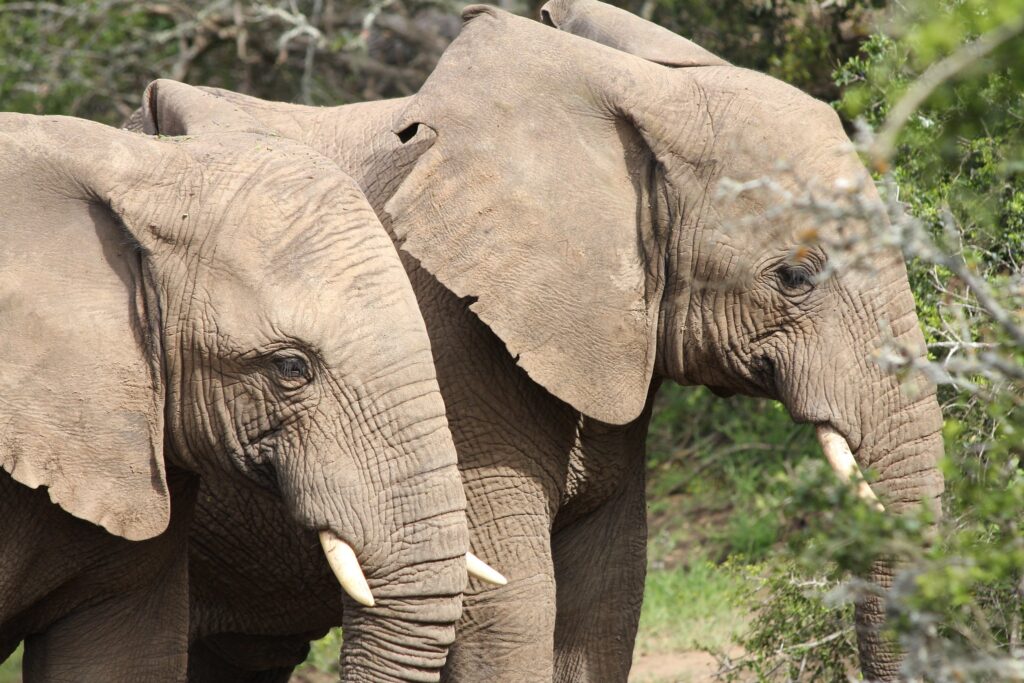
Congress is considering banning the importation of hunting trophies from Tanzania, Zambia, and Zimbabwe as part of the current Interior Appropriations Bill. Proponents of the measure, which has already passed the House, hope it will conserve wildlife by discouraging Americans from traveling to hunt wildebeest, elephants, and other charismatic species in Africa.
However, because wildlife agencies in the affected countries significantly rely on trophy hunting revenue, and because Americans comprise the dominant share of the trophy hunting market, the measure risks having the opposite of its intended effect. A ban would jeopardize wildlife conservation funding for the three countries and threaten to derail goals such as achieving “30 by 30” and curtailing elephant poaching. While alternatives to trophy hunting are desirable, no viable options currently exist that would adequately replace lost conservation funding. For this reason, any efforts to ban the importation of hunting trophies would be ill-advised.
Trophy Hunting Provides Scarce Conservation Funding
Like the state wildlife agencies of the United States, the wildlife agencies of Tanzania, Zambia, and Zimbabwe significantly rely on the sale of hunting permits to fund the habitat protection and anti-poaching efforts underpinning conservation. Tanzania and Zimbabwe’s wildlife agencies each rely on trophy hunting for 60 percent of their annual budgets, while Zambia relies on hunting for half of its.
American hunters provide the lion’s share of this conservation funding because they comprise three-quarters of the global trophy hunting market and the United States is the world’s largest importer of hunting trophies. Tanzania has called the United States its “most important market for hunting trophies,” as 43 percent of visiting hunters are American, and U.S. hunters are responsible for more than 50 percent of the hunting-related income in Zimbabwe’s communal areas.
Import Bans Risk Undermining Conservation Ambitions
Trophy hunting revenue has allowed Tanzania, Zambia, and Zimbabwe to advance global and regional conservation ambitions. These include enabling the three countries to protect between 27 percent and 38 percent of their respective land masses as wildlife habitat. These figures approach or exceed the 30 percent scientists say all countries must aspire to in order to curtail the loss of biodiversity. This scientific recommendation underpins the global “30 by 30” ambition, to which the United States also subscribes.
One example of how trophy hunting has translated into wildlife habitat conservation is in Zimbabwe, where $35 million raised via elephant hunting is earmarked for managing the country’s national parks. These hunts are possible because Zimbabwe is home to the second-largest elephant population in Africa, a product of robust habitat conservation and anti-poaching efforts enabled by trophy hunting revenues. Similarly, Tanzania invests 50 percent of its trophy hunting revenues in anti-poaching and is home to the continent’s third-largest population of elephants.
Trophy Hunting Is an Imperfect Tool with No Viable Alternatives
Trophy hunting, however, is not without its challenges. While moral considerations often dominate the policy debate, there are real concerns about the practice as well. If not well managed, trophy hunting can cause local declines in wildlife populations, with lions a species of specific concern. Like the wider tourism sector, trophy hunting is also vulnerable to corruption and uneven enforcement of regulations, and it would benefit from systemic reform.
These manageable challenges are overshadowed by the reality that Africa’s trophy hunting industry is steadily losing the core customer base it depends on to generate conservation funding. Most American hunters are middle-aged or older, fewer and fewer people are following in their footsteps, and even fewer of them are traveling to Africa to hunt. Africa’s trophy hunting industry may be in its twilight years, and as it goes so too will any benefits it provides.
Could photo-tourism take its place? That is unlikely. Photo-tourism is far from a neat replacement because areas used for trophy hunting are typically too hot, dry, and remote to welcome the average photo-tourist. This is apparent in Zimbabwe’s communal areas, where photo-tourism generates only half the revenue trophy hunting does.
Viable Alternatives To Trophy Hunting Must Be Developed
Indeed, the extent to which any kind of tourism remains a viable means to fund conservation is increasingly in question. The global tourism shutdown brought on by the Covid-19 pandemic upended conservation efforts across Africa as the westerners who pay for the bulk of hunting permits and park entrance fees alike suddenly stopped doing so. In a glimpse of what may be in store should trophy hunting vanish without a successor, Zimbabwean anti-poaching units suddenly had only about half of the resources necessary to do their jobs. This unfortunate reality contributed to a rise in the poaching of species, such as impala, for bush meat.
There are currently more questions than answers regarding the best alternatives to trophy hunting, and tourism in general, as sources of conservation funding. While increased aid from international donors is an option, it can also be fickle and lacks the self-sustaining characteristics of commercial tourism. An increase in aid also risks reducing the agency and growing the dependency of African nations on governments in the global North.
Ideas like biodiversity offsets, which make wildlife an economic asset by allowing companies to mitigate biodiversity losses in one area by financially supporting conservation in another, may eventually hold promise. However, they remain immature and unproven in the African context. And carbon sequestration funds, while valuable, have yet to find a vehicle directly linking them to wildlife conservation. They also lack the means to create an economic incentive for African countries to live alongside dangerous and injurious wildlife like elephants and lions.
Whatever alternatives might emerge, a key indicator of viability will be their ability to put hard cash on the table to enable Tanzania, Zambia, Zimbabwe, and other African countries to conserve wildlife in the ways that trophy hunting does. Until such alternatives emerge it would be foolish to remove trophy hunting from the wildlife conservation toolbox, as Congress’s proposed ban on hunting trophy imports would do. Any discussion of doing so should be approached with caution by policymakers and conservationists alike.



